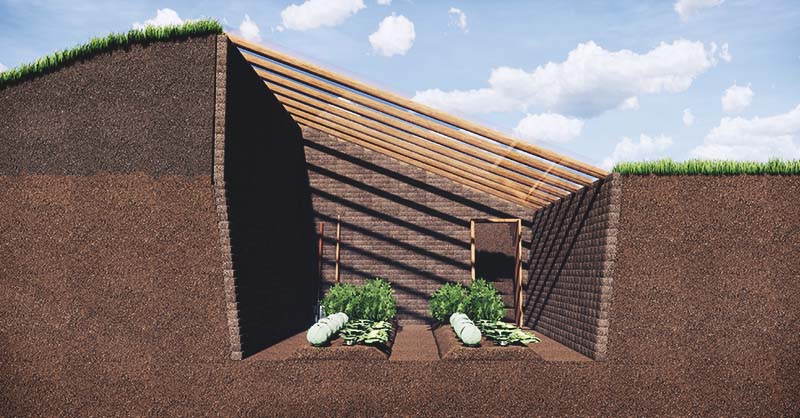Every winter since I started this project, I say to myself — and others — that I’ll spend the winter designing and planning so I’m ready to just jump right into construction when the season opens again in the spring.
There has been some of that, for sure, but mostly I’ve been spending the winter learning new woodworking skills, fussing with my 3D printer and related projects, and going down deep into various rabbit holes either on the internet (Pinterest, I’m looking at you, you siren) or in books.
Most recently, I’ve learned about rocket stoves (a clever way to make a fire draw an extreme draft to burn very hot and therefore clean) , their friend the thermosiphon (a clever way to circulate water during heating using the heat itself to the moving), and am exploring earthbag construction techniques. These things are likely to come together in a homestead hottub some time in the next year or two. I’m definitely not the only one to have thought of this. “There are many others like it, but this one is mine”.
Down another of those rabbit holes I discovered a thing called a “walipini”. It’s in the general class of things one would call an “earth-sheltered greenhouse”. In this case, the walipini is built into the ground, with five sides protected from wind and cold, with just one side exposed (the roof!) to admit sunshine for growing.

There are lots of benefits. First, you get the geothermal & earth mass stability of a root cellar to give you a year-round baseline temperature somewhat above freezing. Second, with earth on five sides, it’s intrinsically insulated (one can add supplemental materials, too, of course) and there’s far less glazing to care for than in a traditional “glass house” design. Third, and most importantly, a consequence of that year-round baseline temperature is that to get from there (45-55F typical) to decent growing temps (60-80F), is not a big lift. In particular, even the short, lower-intensity sunshine of the winter is likely to be sufficient to grant solar gain of 10 to 20F inside, achieving growing temperatures year-round and importantly, never freezing. Combine that with the insulative property of all that earth, and you’ve got something pretty great. You’ve also got something you need to clear the snow offatheroofa.
There are other ways of harnessing geothermal energy to modulate the greenhouse temperature, such as this fellow in Nebraska who is able to grow citrus in winter. This is some exciting stuff. His set-up isn’t a walipini, but has some of the characteristics and these concepts could certainly be combined.
What has this to do with anything? Well, with all that so-so land available at the homestead site, it seems prime location to try some of these more evolved techniques for growing food in a harsh climate. And speaking of so-so land, I’ve also learned about a technique to symbiotically introduce fish to greenhouse growing, called “aquaponics” (not to be confused with hydroponics, though they have some aspects in common). The basic idea is the fish excreta are processed by bacteria to make the nitrogen and other stuff metabolically available for the plants, which thrive in the nutrient rich water, and conveniently serve as a filter for the fish tank. Water is circulated, rather than dropped on the earth to mostly evaporate or sink to the water table. As a bonus, the big fish pool acts as a thermal mass for the greenhouse, too, further helping to regulate temperature. You get primo organic produce and the occasional fish for dinner, year round.
I had no idea there was so much cool stuff happening in agriculture! I’ve never really been into growing things, really — my interest here started simply enough in researching gardening/greenhouse concepts for M, who is the primary cultivator around here. But then, having found all this cool stuff along the way, I’ve gotten excited by it and am seriously considering giving some or all of these concepts a solid try.
I don’t have a specific goal of becoming totally food-independent, but I’m definitely interested in trying out some of these techniques simply for the intellectual stimulation of it. If it turns out that food can be grown this way in what is otherwise an environment with marginal soil and a relatively short growing season, well, that’d be lovely 🙂
So how have I been spending my winter, while the construction project is on hiatus? Learning about various aspects of agrigeekery! A pile of new line items has been added to my project list. It may get a bit human-lonely out there in the forest, but for sure it won’t be boring. And with all those fish and plants and of course the wildlife in the forest itself, well, not so much with the lonely, either, except when it comes to having two-way conversations with words.